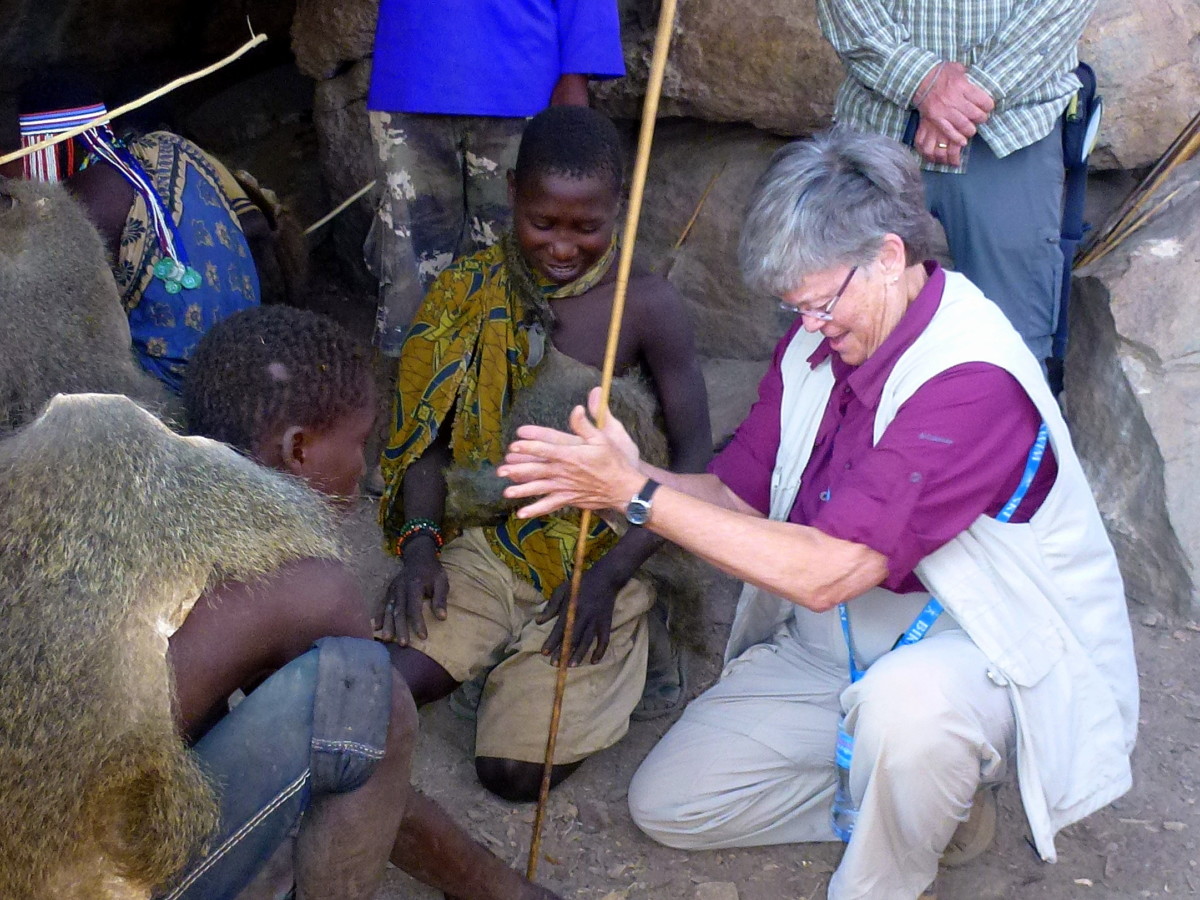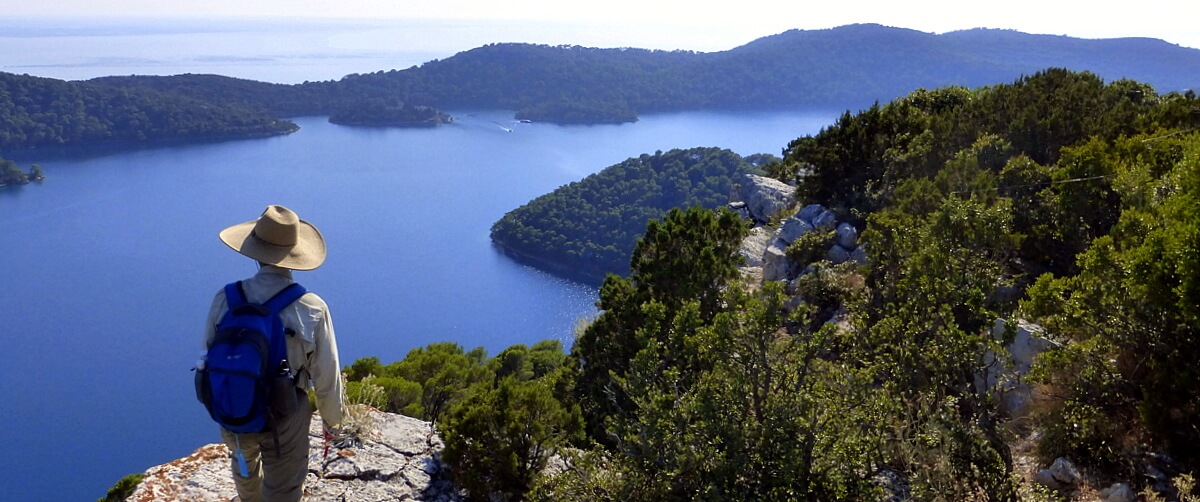 The blog below was written during the 2013 planning trip I took with Scott Isom to Kenya and Tanzania. One of our primary objectives during in-country scouting trips is to “get the bugs out” of the itinerary. Little did we imagine the literal nature of that task on this particular evening in Tanzania.
The blog below was written during the 2013 planning trip I took with Scott Isom to Kenya and Tanzania. One of our primary objectives during in-country scouting trips is to “get the bugs out” of the itinerary. Little did we imagine the literal nature of that task on this particular evening in Tanzania.
Please be aware that WAI travelers experienced nothing of the now ridiculous-sounding discomfort Scott and I endured. This blog is therefore intended both to entertain and to give insight into the sometimes intense mechanics of planning a Walking Adventure.
Again, this is NOT the type of experience our clients will feel. Our goal is to “get the bugs out” of the itinerary before our travelers arrive.
******************************************************************************
Mosquito River: Getting the Bugs Out in Tanzania ~ Part 2
Hunting for the Hadzabe
Continued from April 19th entry…
George and Livin met us at the reception of Migunga, our luggage was stowed, we tipped the porters, and trundled ourselves into the LandCruiser. Conversation at 4:30 am was extremely limited. Both Scott and I were hoping for a supplement to the poor night – a bit of dozing en route to the Lake Eyasi area where we were supposed to meet the Hadzabe hunters. Sleep, however, was not in the cards. The roads were rough and rutted by-products of the recent rainy season and the economic state of the country. Bouncing around like a couple of bobble head dolls for an hour and a half didn’t yield much rest.
As we approached Lake Eyasi, the sky began to light up. Livin pulled over to the side of the road, and George opened the door to admit our “guide”, a young local named Gabriel. Off we went, directed by Gabriel’s hand signals even farther away from civilization. By now, we’d left the dirt road represented on the map as a “highway” and were off in the bush on dirt tracks not clearly discernible as meant for vehicular use.
Finally, Gabriel signaled Livin to stop, hopped out, and disappeared into the bushes with no further explanation. George told us the Hadzabe were nomadic and moved frequently. Gabriel was trying to locate their current camp before we joined him in the proposed hunt.
We’d learned very little up to now about the Hadzabe. Scott had read that they were a hunter/gatherer tribe living a primitive lifestyle outside the threshold of any modern society. Our activity with them was portrayed as learning how they hunted, including the poison-tipped arrows they sometimes used on larger game.
By this time, however, changing signals of how this activity might develop, and uncertainty as to how to even find the tribe had triggered mental travel planning calculus that deletes an activity from the program and starts the search for a replacement.
Gabriel returned to the car and signaled for us to join him. I stepped out of the car and looked at Scott as I grabbed my pack. “What do you think the chances are of this working?”, I asked with a grin. “Slim to none!” was his curt reply. “You get people up at the butt-crack of dawn to drive in the dark for 2 hours over terrible roads to meet with a tribe you can’t even find, to supposedly hunt with them!” I started laughing out loud, partly at Scott’s frank outburst and partly at the ridiculouso situation in which we found ourselves.
Dutifully, however, we followed George and Gabriel away from the car and into the bush, chuckling as we made the transition from the awful night at Migunga to the ridiculous assignment of crafting a working activity out of hunting with the Hadzabe. Every minute or two Gabriel would whistle, hoping for a return whistle. About 10 minutes into the bush, we came upon an abandoned group of huts. They were extremely crude, about 3 feet tall, made from sticks and covered with corn husks. Gabriel said this group had moved on, so we kept going, deeper into the bush, trading wisecracks about hunting “for” rather than “with” the Hadzabe.
Now we were curious, however. Gauging from the crude abandoned huts, this was apparently a pretty strange and primitive group of people. A few minutes later, Gabriel’s whistle was answered, and we arrived at another group of huts. Gabriel told us to wait and went to confer with whomever he could. Apparently only a few people speak the language of the Hadzabe, whom Gabriel referred to as bushmen. They use a clicking type language and do not speak the Swahili that’s used as the common tongue by most in east Africa.
Gabriel came back shortly and told us that the men from this group were already gone, but that a larger group that we could try was apparently camped nearby. By this time, Scott and I were straining to see how this could work: the timing, the unreliability of our “hosts”, the roughness of the setting – all seemed like challenging barriers. Since we were already here, however, we decided to go one level deeper, and retraced our steps to the LandCruiser.
About 15 minutes later, we arrived at another spot in the bush, indistinguishable, to us, from any other place we’d been, but apparently of significance to Gabriel. Grabbing our packs, we followed Gabriel again. Almost immediately, we were in the presence of a group of young bushmen under a hypnotically huge and bizarrely shaped baobab tree.
Over the next 90 minutes or so, we interacted with this group of guys. There were 25 people in the clan, but we interacted only with the men. They were all shorter than normal but otherwise their features were indistinguishable from other Africans we’d met on this trip. They were friendly and good natured, all shaking our hands while giving their traditional verbal greeting. Apparently, we’d interrupted a morning of crafting arrows and bows. Every now and then, one would play a little on a stringed instrument. Before long, they got us involved in making fire the traditional way, with two pieces of wood ground together. Neither Scott nor I were successful without their help. It required tremendous focus and bicep power.
Gabriel asked about hunting and, though it was already late in the morning for any serious hunting, they obliged by grabbing their bows and arrows, and striking out into the bush. We hurried to follow, finding ourselves immediately caught up in the chase.
Gabriel warned us that they were only after very small game, and it soon became apparent that this was limited mainly to birds. Before long, one of them knocked what we were told was a mousebird out of a tree with a well-placed arrow. While the shooter scampered up into the tree to retrieve his arrow, one of the numerous dogs following the hunt tried to grab the bird and was soundly boxed by one of the hunters for his efforts. The mousebird was added to the game bag, but it was hard to see how this was going to feed the clan. Since this was primarily a demo hunt, however, we assumed their early morning endeavor had met with more success.
The hunt lasted only about 30 minutes, but we were on the go for much of it, hopping over bushes and running to keep up when they spotted their quarry ahead. One highlight of the chase was the massive baobab trees we kept encountering, looming over us like surreal parts of a fantasy movie set. After we finished the “hunt”, our hosts demonstrated their prowess with bow and arrow, and encouraged us to give it a go as well. We tried, and quickly demonstrated that we would not last long in a hunter/gatherer society.
Back at their camp, we got to see inside one of the huts. Gabriel told us a family unit is strictly limited to man, wife, and two children. Their numbers, as a result, are dwindling, and only about 250 Hadzabe remain! They refuse all government aid (on the way out, we drove by a school built for them that was abandoned), and almost all benefits of a modern society.
We learned that they trade honey and money earned from tourism for steel arrowheads made by another primitive blacksmithing tribe, and for marijuana, which they smoke freely. Some clothing is received from the government, but what the men wore was mainly animal skins, especially baboon.
Soon the men gathered in a clearing for a dance, and we were invited to join in. It was a lighthearted affair, and easy for the uninitiated to follow. The men seemed to like trading hats and Scott and I were both soon wearing baboon headbands while our baseball caps sat atop bushmen. My over-sized western head was far too large, however, so the baboon headband ended up around my arm.
The morning ended with an opportunity to purchase bows and arrows made by our hosts. There was no direct pressure, but clearly buying was the intended purpose of this part of our visit, and since there were only two of us, it was difficult to use our normal shopping-avoidance tactics. Bows and arrows ended up in the LandCruiser as we said our farewells and headed back up the bumpy road.
What a strange and curious 24 hours we’d had. Whether and how we use this experience with the Hadzabe depends upon how the rest of the trip in this part of Tanzania goes, and on how confident we can be that Gabriel will convince them to meet us in the same place. Their camp under the massive baobab tree, and the possibility of non-hunting activities with the women (root gathering and seeing the homes), could make this a viable, and unforgettable, experience.
*********************************************************************************************
Post Script: While this experience was salvaged for our first Kenya & Tanzania Walking Safari in 2013, this region of Tanzania proved to be logistically challenging and the 2013 tour was our only return visit to the Hadzabe. We have since speculated that perhaps tourism is not in the best long-term interest of this people group, but the experience is definitely thought-provoking. Once again, we are confronted with the question of how to live in a 21st century world with people groups whose lifestyle is completely timeless and incompatible with a digital world.

